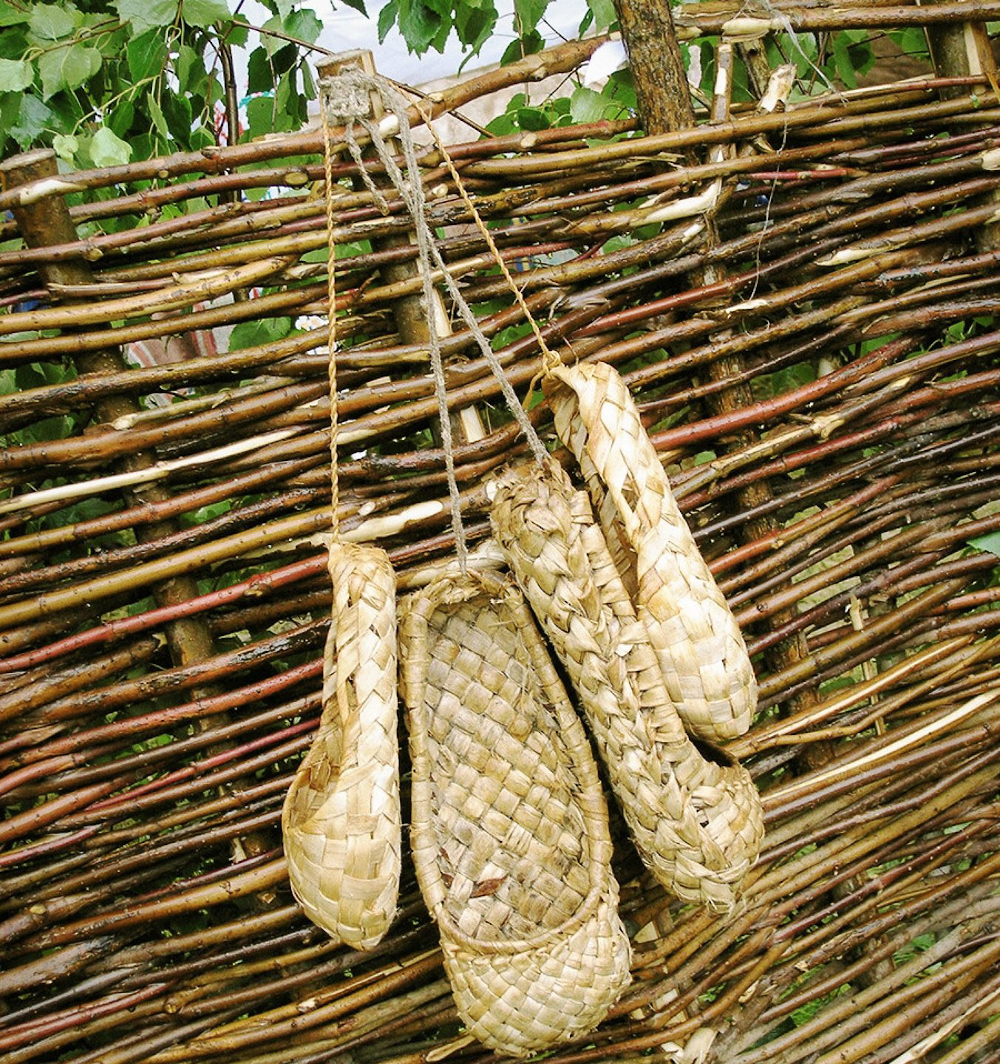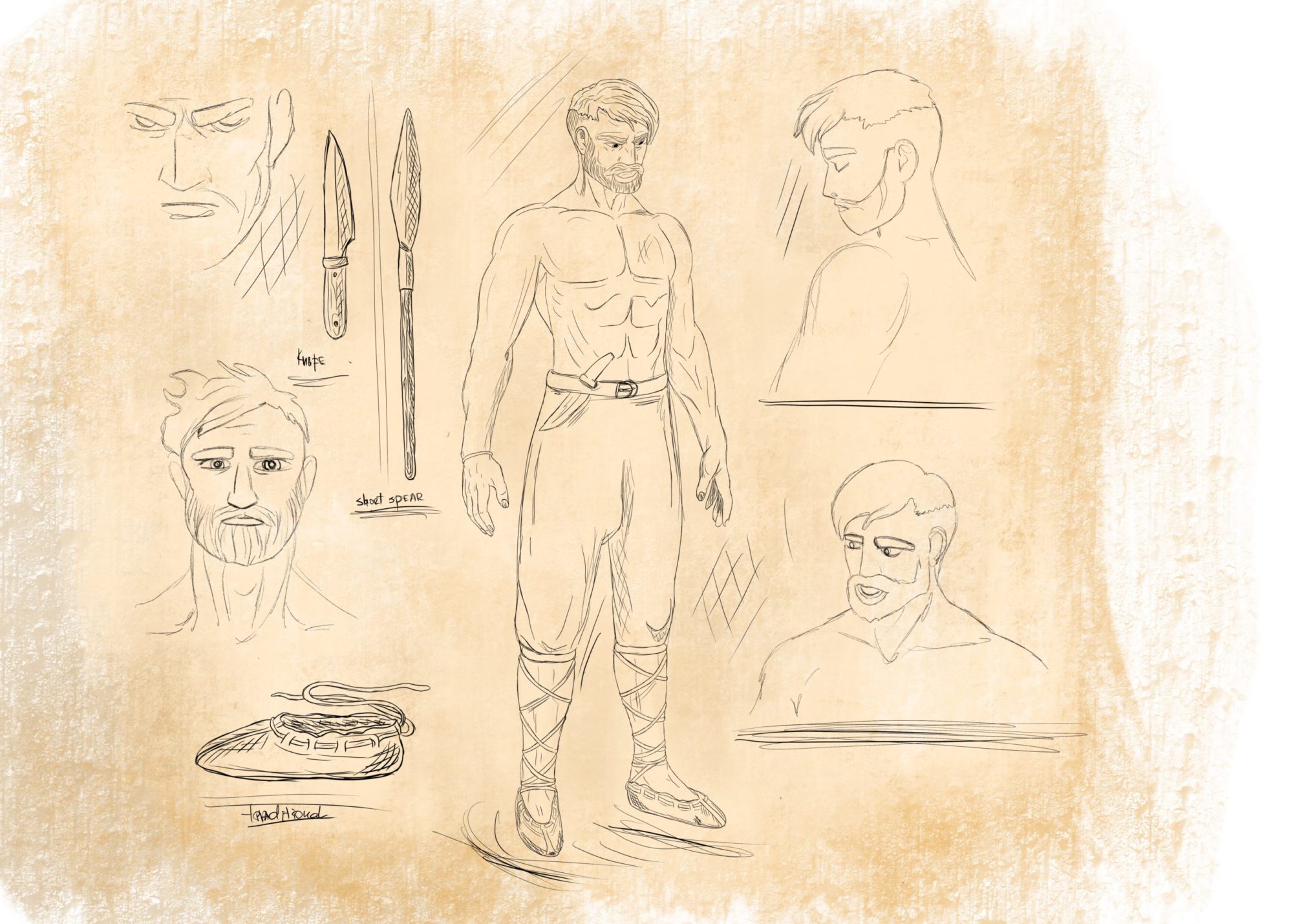The Russians believed that Domovoi / Dvorovoi (derived from “dvor” – yard) lived in the yard, and that the welfare of livestock and poultry depended on him. He had to be appeased, and even the choice of animals when buying and selling was connected with his supposed “taste.” In the Kostroma region, in order to protect the newly purchased cattle from Dvorovoi, people took bread and salt and went into the yard, where they bowed and said: “Father, Dvorovoi, dear yard keeper, love our cattle.”
ꏍ
In Polish Pomerania, it was believed that after sunset the souls of the dead wander in the yard. Therefore, in the evening, one cannot pour water into the yard, especially on memorial days, otherwise you can pour over the spirits. After sunset, the Kashubs did not take water from the well, did not throw out garbage, did not let the dogs off the leash, did not stand under the roof by the drain during the rain. The Belarusians and Bulgarians did not use the baby bedsheets that were accidentally left in the yard after sunset. And Slavs in the Carpathian region, did not sleep in the yard on Rozygry day (the Monday which followed the Rusalia Week), because at that time the spirits living in the forest circle around the houses and can drag a sleeping person into the forest.
ꏍ
What other mythological tenants or visitors to the yard do you know?
ꏍ
To be continued…
Artist: Ivan Shishkin
ꏍ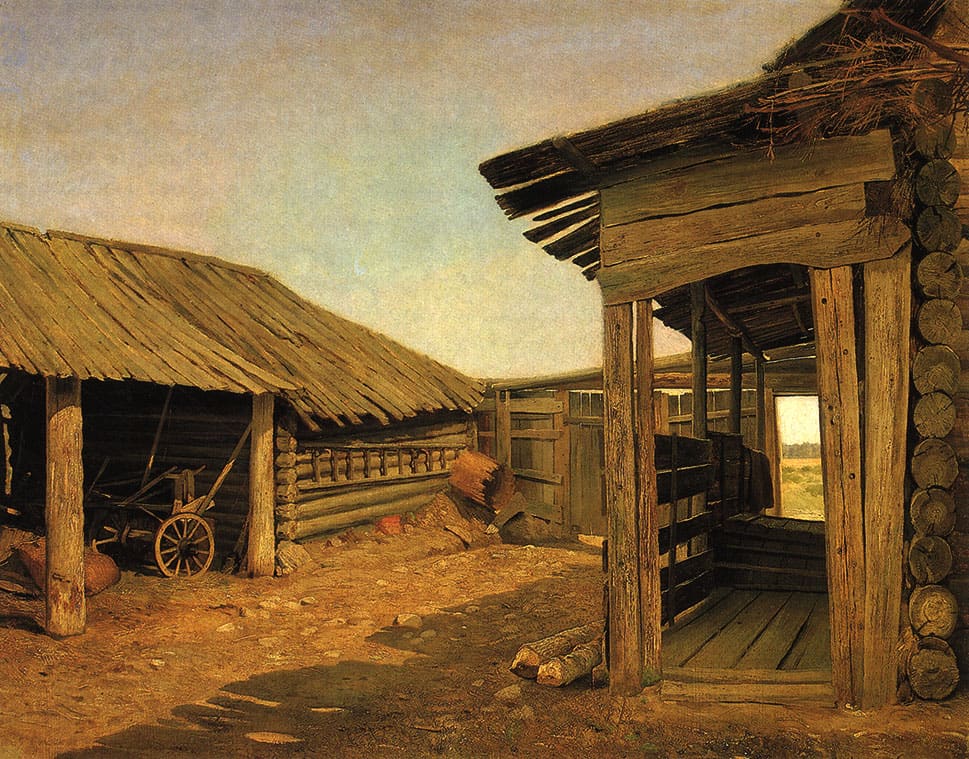
Yard protection in Slavic tradition
To protect the yard from evil spirits, evil eye, curse, etc. Slavs took various magical measures. The Bulgarians, for example, planted elm tree. They believed that then “no evil and no disease can enter the yard, and the house itself will never be empty.”
ꏍ
Slavs of Polesie region made sure that no “bare” branch (without a bark), brought by the wind, was kept in the yard – to prevent it from being “naked” and “empty”. On Kupala they also erected a “pole with bark” in the yard, and put a cow skull on a top, so that the “yard (house) would be rich”.
ꏍ
According to the beliefs of some western and southern Slavs, in order to protect the yard from reptiles and insects, one should run around it with a bell in hand or sweep it before sunset with a new broom. Another way was to fumigate with a smoke and sprinkle with ashes from a fire, in which garbage from all over the yard was collected. To guard the yard from evil forces, salt was also sprinkled along the fence. To defend the barn from the witch who was trying to “steal” the crop, millet was scattered in the yard. And the Russians, in order to protect livestock from the evil eye, hung out a bunch of old bast shoes in the yard, thus diverting the attention of a dangerous person from animals.
ꏍ
What protection, in your opinion, is the most effective?
ꏍ
To be continued…
Artist: Vladimir Zhdanov
ꏍ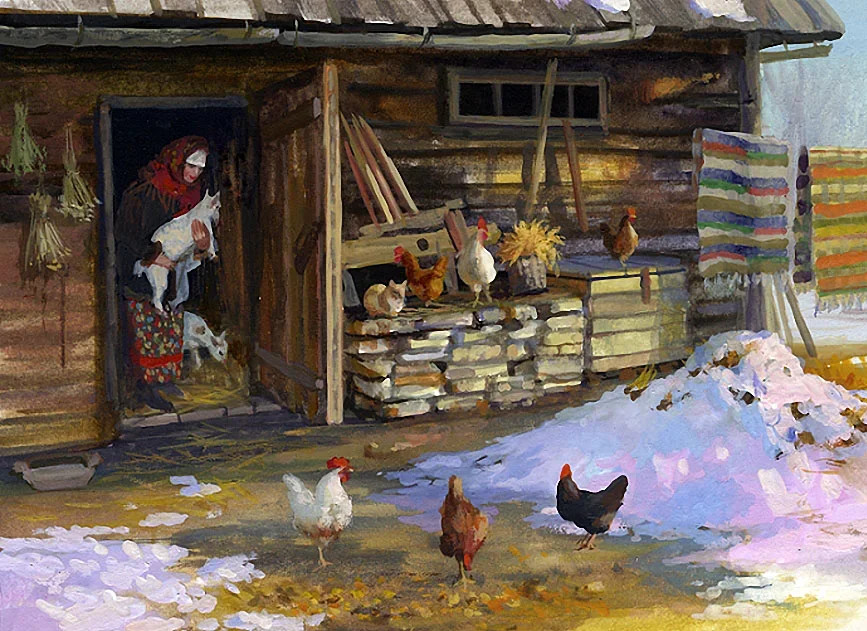
The yard in the Slavic tradition
The yard (or courtyard) of the ancient Slavs had mystical properties. Russian peasants, when they handed over livestock to the buyer, made sure that dirt, manure, straw or wood chips from the yard did not stick to the hooves of the animal, and that the buyer did not take anything of the kind with him. Because success in cattle breeding was believed to be carried over from one yard to another in this way.
ꏍ
As the yard adjoins the “outside” world, in Slavic tradition it is considered some sort of a transition space between the “native” and the “alien” worlds. Therefore, it can be dangerous for the household members, especially at certain times of the day and in certain calendar periods and dates. A person outside the walls of the house (as well as in the yard) is in danger from demonic spirits, the souls of the dead, and people with an “evil” eye, who could be just passing by. According to Mazur beliefs, sorcerers and witches could leave or bury various objects in the yard in order to curse the owners. For example, a hair mat (kołtun), which caused diseases and other misfortunes.
ꏍ
Did your ancestors use any special methods to protect the yard?
ꏍ
To be continued…
Artist: Yuri Patsan
ꏍ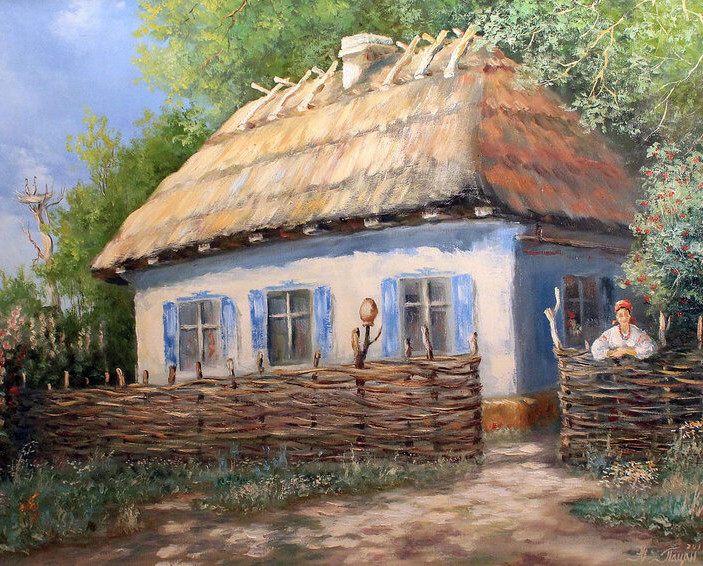
Lapti (bast shoes) and evil spirits
Lapti (bast shoes) and evil spirits.
ꏍ
Bast shoes are often mentioned in connection to mythological creatures. Leshy and Polevik (field spirit) are often portrayed wearing lapti. Weaving bast shoes is a favorite activity of evil characters, and Vodyanoi in particular.
ꏍ
Bast shoes were also used to appease evil spirits. Vologda fishermen and millers threw bast shoes into the water to get help from Vodyanoi. If the cattle were lost, the peasants of the Smolensk region appealed to Rusalki. They went to the forest and brought with them bast shoes, footcloth, bread & salt and left it in a sack on a tree with the words: “Please, Rusalki, accept my gift, and return the cattle!”. In the Kostroma region, when moving to a new house, the owners went to the old yard with one bast shoe and invited Domovoy to go with them in that shoe. In the Vladimir region, people supplied Domovoy with shoes, by hanging old worn “little lapti” in the yard.
ꏍ
The need for shoes for Domovoy is understandable. But what would Rusalki do with them? 😉
ꏍ
More interesting facts can be found in: “Slavic Antiquities” – encyclopedic dictionary in 5 volumes by Institute for Slavic Studies of the Russian Academy of Sciences.
ꏍ

Lapti as a talisman
Lapti (bast shoes) were used in magical practice as a talisman. The Russians hung out old bast shoes near the barnyard, in front of the house, or at the gate. This was done in order to protect the house and livestock from the evil eye: anyone who came will first look at the pile of bast shoes and “break his eyes” at them, therefore, will lose the opportunity to inflict damage. These rituals can also be viewed as a sacrifice of shoes to deceased ancestors, who, according to Slavic beliefs, periodically visit their native places and need shoes for their travels.
ꏍ
Leaky bast shoes could serve as the amulet called the “Chicken God” (see our previous posts). Old and leaky bast shoes also served as a talisman in family rituals. To prevent the baby from crying at night, a bast shoe was placed at the head of the crib with the words: “Let the child be silent as this bast shoe”.
ꏍ
Lapti were also used in fertility stimulating rituals. For example, when planting cabbage, old bast shoes were buried at the end of each row so that the cabbage heads were large and dense. And in the Vologda region, a calving cow was fumigated from the owner’s right bast shoe.
ꏍ
What do you think they did with the remaining bast shoe from the owner’s left foot? 😉
ꏍ
To be continued…
ꏍ